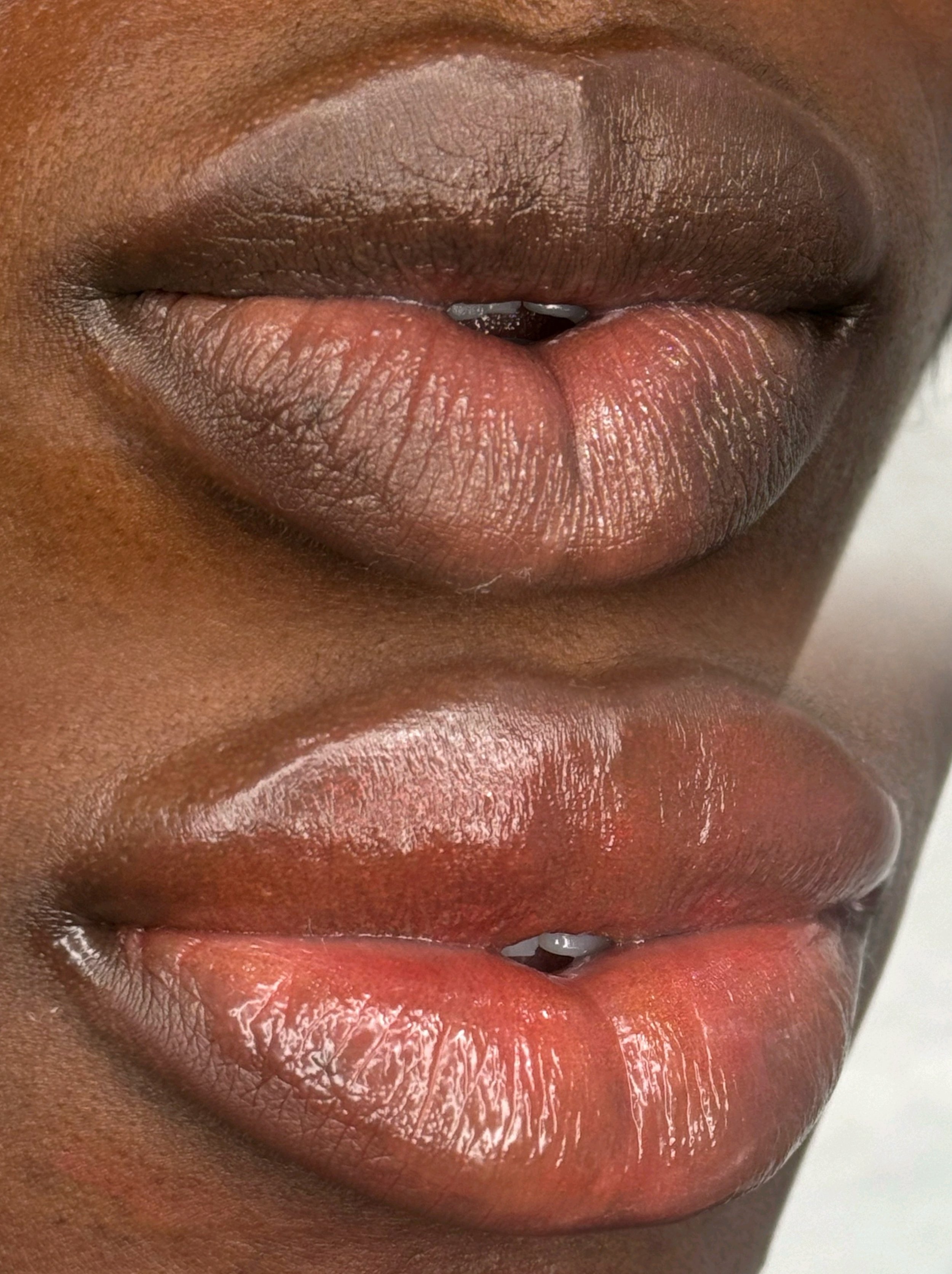LIP BLUSH
Lip blush is a tattooing technique that enhances the natural shape, tone, and symmetry of the lips. Soft layers of pigment are deposited to create a sheer, diffused wash of color—restoring definition and giving the appearance of fuller, more balanced lips without harsh lines or a heavy makeup look.
This service is fully customizable and can also be corrective, helping to neutralize hyperpigmentation, blend uneven tones, and soften the appearance of scars. The result is a fresh, natural tint tailored to your features and skin tone.
Lip blush typically lasts 2–3 years, fading gradually over time for a soft, lived-in finish.











LIP CARE
-
Wipe lips every half our for the next three hours with the antiseptic wipes provided in your after care kit. This helps remove lymph fluid, which can cause scabbing if left to dry.
Keep lips clean and hydrate liberally with Aquaphor.
Use a straw when drinking (Reusable glass straw provided in aftercare kit).
-
Apply Aquaphor constantly.
Lips will feel tight + chapped (this is normal).
Avoid:
Touching or picking
Spicy foods, citrus, alcohol or anything that can irritate your lips
Make out sessions
Smoking
-
Day 1–2: Fresh & Swollen
• Lips will appear brighter + more saturated than expected—this is normal.
• Mild swelling + tenderness are common.
• Blotting + keeping lips clean is essential to prevent buildup and scabbing.
Day 3–4: Flaking & Peeling
• Lips may begin to dry out + flake—similar to a sunburn.
• As they peel, color may appear patchy or faded.
• Do not pick or exfoliate—let the skin shed naturally.
Day 5–7: Faded Appearance
• This is the “ghosting phase,” where the color may look very light or almost gone.
• Don’t worry—pigment is still settling beneath the skin.
Week 2–4: Color Reappears
• As skin regenerates, the color begins to softly return + even out.
• It may still look lighter than expected but will continue to develop.
Week 6–8: Healed Result
• Final color + shape settle in—softer, more natural, + true to tone.
• If needed, a touch-up can refine shape, depth, or symmetry.
Throughout the healing process:
• Moisturize only with the aftercare balm your artist recommends.
• Avoid sun exposure, saunas, exfoliants, + makeup on the lips.
• Healing varies per person, especially if you have a history of cold sores or sensitive skin
LIP BLUSH FAQs
-
Lip blush is a tattooing technique that enhances the natural shape, tone, and symmetry of the lips. Soft layers of pigment are deposited to create a sheer, diffused wash of color—restoring definition and giving the appearance of fuller, more balanced lips without harsh lines or a heavy makeup look.
This service is fully customizable and can also be corrective, helping to neutralize hyperpigmentation, blend uneven tones, and soften the appearance of scars. The result is a fresh, natural tint tailored to your features and skin tone.
Lip blush typically lasts 2–3 years, fading gradually over time for a soft, lived-in finish.
-
Lip blush typically lasts 2 to 3 years, depending on factors like skin type, lifestyle, and aftercare. For some, subtle fading may begin around 12–18 months, especially with frequent sun exposure, exfoliating treatments, or smoking.
Touch-ups are often recommended after the initial healing period (usually 6–8 weeks) and then every 2-3 years to maintain color and shape.
-
Yes, you can get lip blush if you have filler—but timing matters.
For best results, it’s recommended to wait at least 4 weeks after receiving lip filler before getting lip blush. This allows any swelling or changes in lip shape to settle so your artist can work with the lips’ true contours.
If you’re planning to get filler after your lip blush appointment, it’s best to wait until the lip blush has fully healed—typically around 6–8 weeks.
Always let your artist know if you’ve had filler or plan to, so they can design and time your treatment accordingly
-
If you have a history of cold sores and are considering lip blush, it’s essential to take antiviral medication as a preventive measure—even if outbreaks are rare.
Here’s what to do:
• Consult your doctor and request a prescription for an antiviral medication like Valacyclovir (Valtrex) or Acyclovir.
• Most artists recommend taking the antiviral 2–3 days before your appointment and continuing for 2–3 days after to reduce the risk of a flare-up.
Lip tattooing can trigger cold sores due to the trauma to the skin, so skipping this step could compromise healing and results.
Make sure to let your artist know about your history—they can guide you through pre-care tailored to your needs.
